Snow damage to plants can be severe, but it’s easily preventable. In this post I will show you how to protect plants from snow so that you won’t have any disheartening surprises after everything melts in the spring.
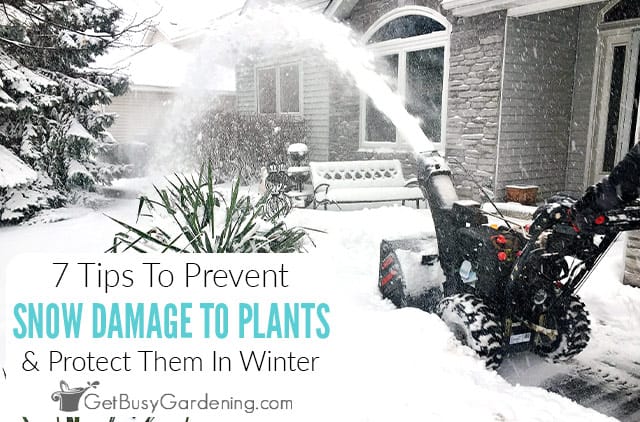
Most of us forget about our gardens as soon as we’re done with our fall chores, and don’t think about them again until spring (except for day dreaming).
Who can blame us. During the long winter months when we have the daunting task of clearing several inches of snow in the freezing cold, the last thing on our minds are the plants hidden under there.
But forgetting about your gardens during the winter can have serious consequences. Don’t worry, below I will give you my best garden-safe snow removal tips to protect your plants from damage.
Is Snow Bad For My Garden?
New gardeners often worry that snow is bad for their gardens, but a healthy layer is actually good for them.
It acts as an insulator to protect plants from severe cold and dry winter winds. It also adds nutrients to the soil and hydrates your gardens as it melts in the spring.
In addition, it insulates the ground and helps to prevent plants from heaving during extreme cold. So, for the most part, the white stuff is good for your gardens.
Will Snow Damage Plants?
Though a heavy, wet snowfall can weigh down plants as well as tree and shrub branches, it rarely causes much damage.
However, major problems can occur during removal. Flying snow and ice from throwers and plows can cause major damage to plants.
Add to that the road salt and deicing chemicals that come along with it, and things can get really ugly.
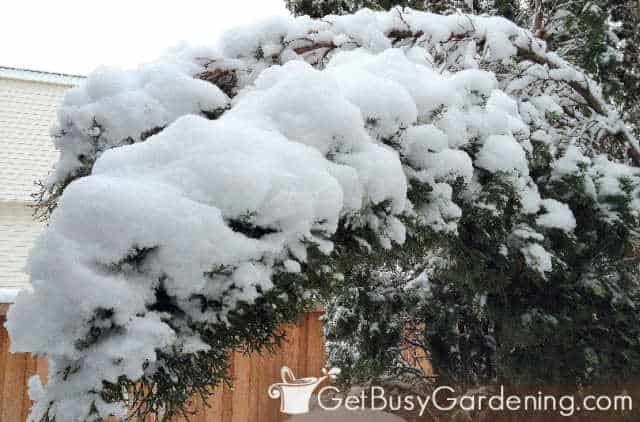
Protecting Plants From Snow Damage
Snow damage can be frustrating, but there are several things you can do to avoid severe harm to your plants and landscaping. Below are my tips for how to protect plants from snow.
1. Plan ahead – The best way to protect plants from snow damage is to plan ahead before winter arrives.
Make a mental note of where all of your beds are located so you can avoid them when it comes time to clear the white stuff during winter.
2. Don’t pile snow on top of beds – Even though it’s is usually good for your garden, it’s not good to pile it on top of plants.
When using a blower, try to shoot the snow over the top of your garden areas and into the lawn rather than burying them with it.
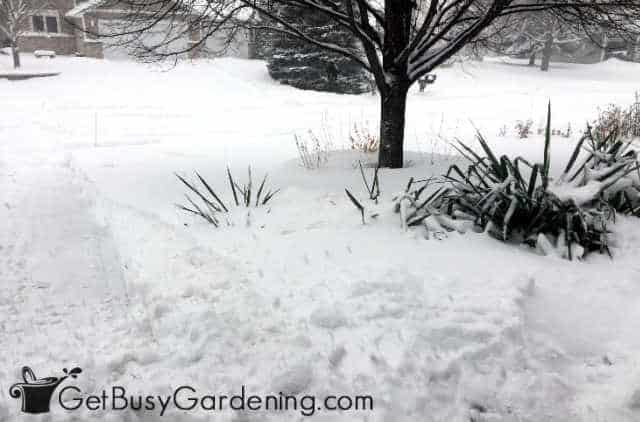
3. Avoid hitting plants with flying snow – Always pay attention to where your thrower is pointing to avoid plant injury.
Try not to hit any trees, bushes, or garden areas. Flying snow could break tree branches, and cause major damage to shrubs and perennials too.
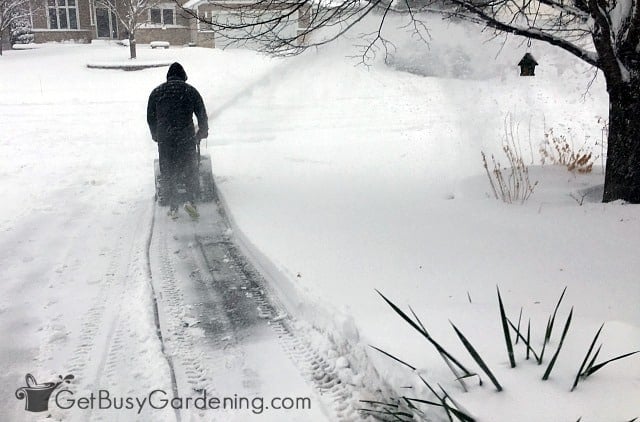
4. Mark the area with stakes – In the fall before the ground freezes, use reflector stakes to mark the edges of the driveway, street, and sidewalks.
That way, both you and the plow drivers will be able to see where the edges are, and avoid any major catastrophe to your lawn and gardens.
As a bonus, this will also protect your equipment from being harmed by accidentally hitting landscaping rocks or other hardscaping.
5. Wrap sensitive plants – Once the temperature is below 40° F degrees in fall, it’s safe to add winter protection to sensitive perennials, trees, and shrubs.
This will help protect plants from heavy snow damage by holding the branches in place so they don’t splay out or break. It also gives them a bit of extra insulation from the hash cold and dry winter wind.
Simply use burlap or a similar material to wrap them, and secure it with twine. Remove the wraps in spring once the chance of heavy snow it gone.
6. Keep salt-laced snow out – Never dump the dirty salt-laced snow into your gardens or on top of any of your plants.
Take extra care to blow or toss it into the grass rather than spraying it over the top of your beds, trees, and bushes.
Related Post: Salt Resistant Plants – Top 15 Perennials That Tolerate Salty Soil
7. Don’t try to remove heavy snow on plants – Trying to remove heavy snow from plants by shaking or hitting them can cause even more damage than the snow itself.
Frozen branches and stems are very brittle and tend to break easier in the winter.
So, if you must remove the heavy stuff from droopy branches, then use your hands or a broom to gently brush it off rather than wacking or shaking them.
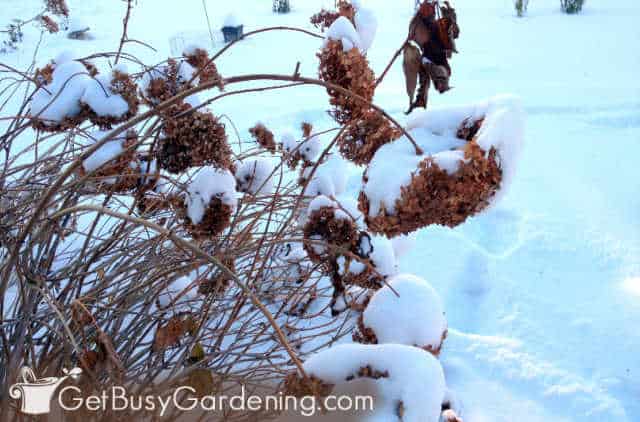
Protecting plants from snow damage during the winter isn’t difficult, but it is important. Simply follow these tips, and your gardens will look amazing year after year.
More About Cold Climate Gardening
- How To Protect Plants From Frost Damage
- Beginner’s Guide To Cold Frame Gardening
- How To Build A DIY Greenhouse
- How To Prevent & Fix Salt Damage To Plants
Share your garden-safe snow removal tips in the comments section below.
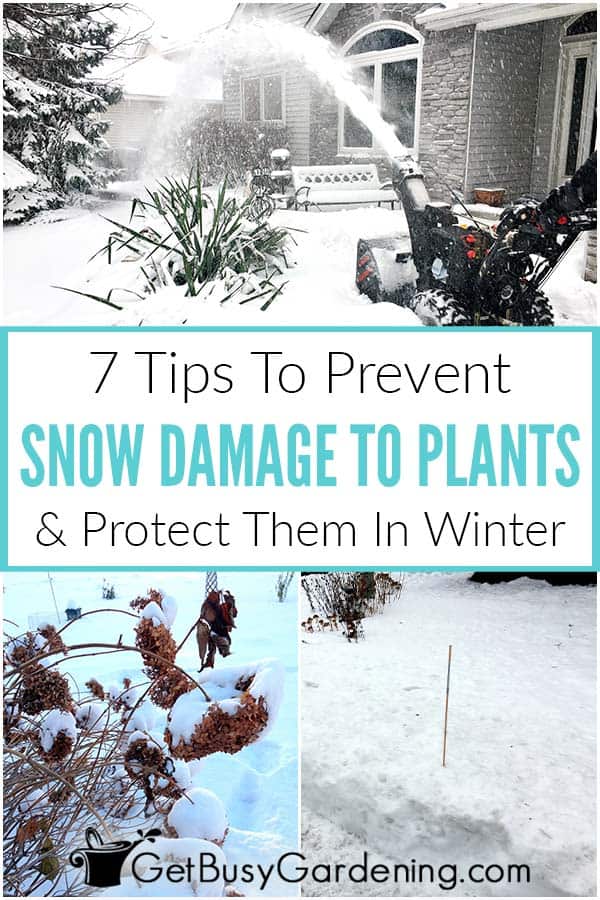
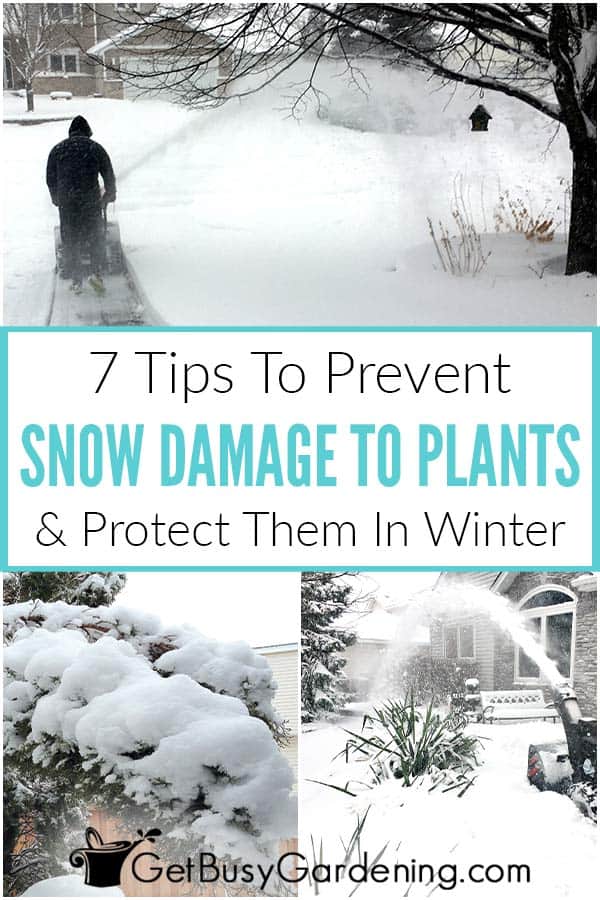
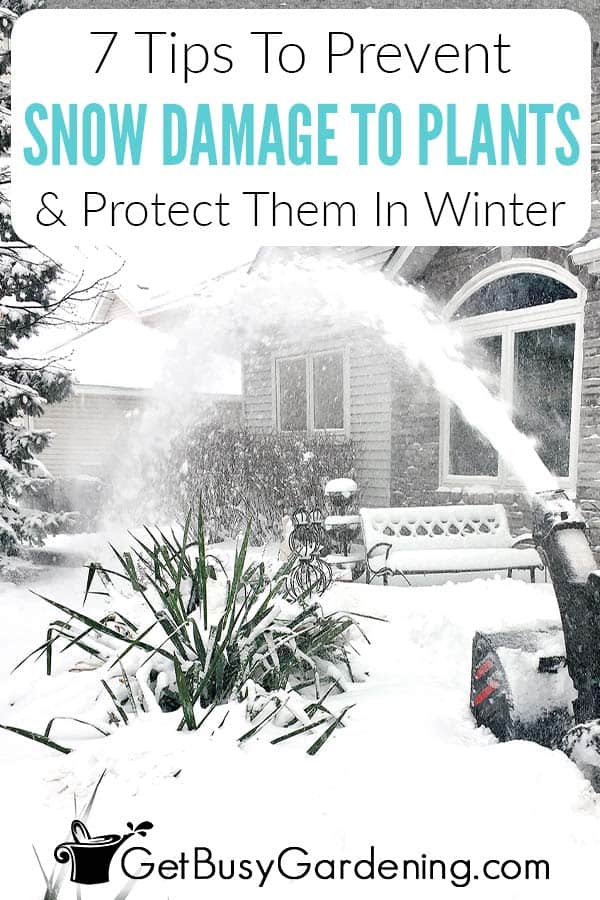



Leave a Reply